| 01 |
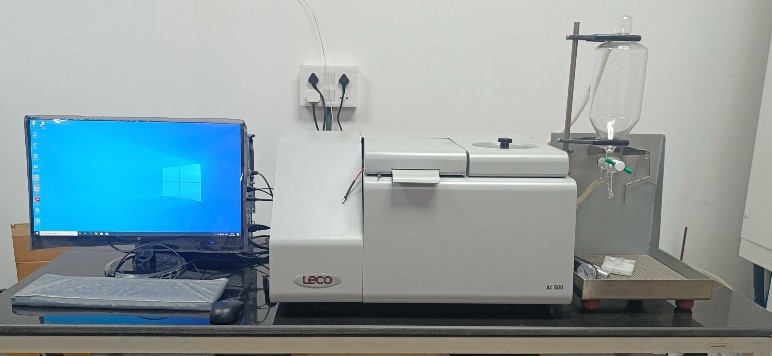
|
Bomb calorimeter is used to measure the heat of combustion of a sample. This technique involves burning a sample in a high-pressure oxygen atmosphere, which releases heat that is absorbed by a surrounding water bath. The change in temperature of the water bath is then used to calculate the heat of combustion of the sample. Bomb calorimeter can be used for both solid and liquid samples. Uses of bomb calorimeters are diverse and varied, with applications in fields ranging from energy research to food science to environmental testing. Make LECO USA AC-500. |
| 02 |
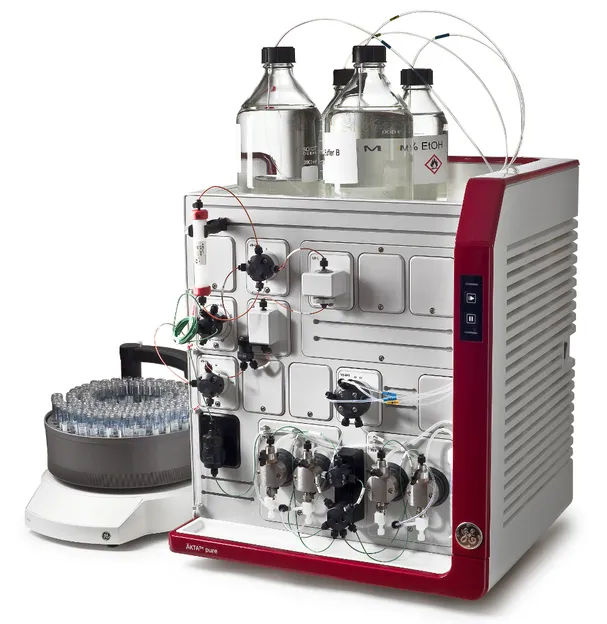
|
Protein Purification System: AKTA pure 150 is a high-performance liquid chromatography system designed for biomolecule purification in research, development, and production settings. Featuring a flow rate range of 0.001 to 150 ml/min and a pressure limit of 25 MPa, it offers versatility in handling a wide range of samples and applications. The system utilizes UNICORN™ control software for intuitive operation and automation, allowing for seamless method development and execution. With various available chromatography techniques including affinity, ion exchange, size exclusion, and hydrophobic interaction chromatography, the ÄKTA pure 150 provides flexibility to meet diverse purification needs. Additionally, its modular design enables easy integration with other laboratory equipment for enhanced workflow efficiency. Key features include an integrated fraction collector, multiple sample injection options, and compatibility with a range of chromatography columns, making it a robust solution for biomolecule purification across various research disciplines. Make: ÄKTA pure 150. |
| 03 |
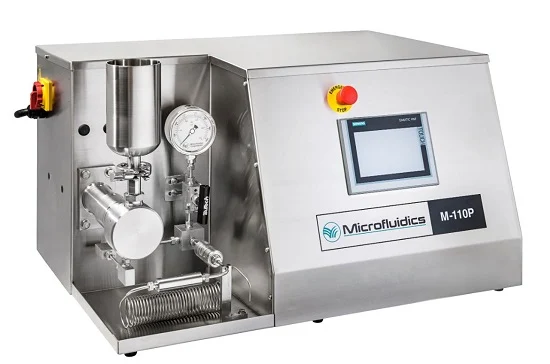
|
High-Pressure Homogeniser: The Microfluidizer® M110P processor is a premium lab-scale model that is ready to set to work. It's a simple-to-use, electric benchtop fluid homogenizer. Using the Microfluidics fixed-geometry Interaction Chamber™ technology and a ceramic (Zirconia) plunger, the M110P is capable of successfully processing a wide variety of fluids, including oil-in-water emulsions, solids-in-liquid suspensions and performing cell disruption of yeasts and plant cells — much of which is performed with as few as one or two passes. The M110P is powered by a standard 20-amp single-phase electrical outlet. The onboard 1.5 kW (2 HP) electric-hydraulic drive powers a single-acting intensifier pump. Process pressures are adjustable up to 2068 bar (30,000 psi) to produce the desired product results. No need for compressed air or hydraulic cooling water. The lab scale M110P delivers a repeatable process with results that are guaranteed to scale up to pilot and production volumes. Make: Microfluidics M-110P. |
| 04 |
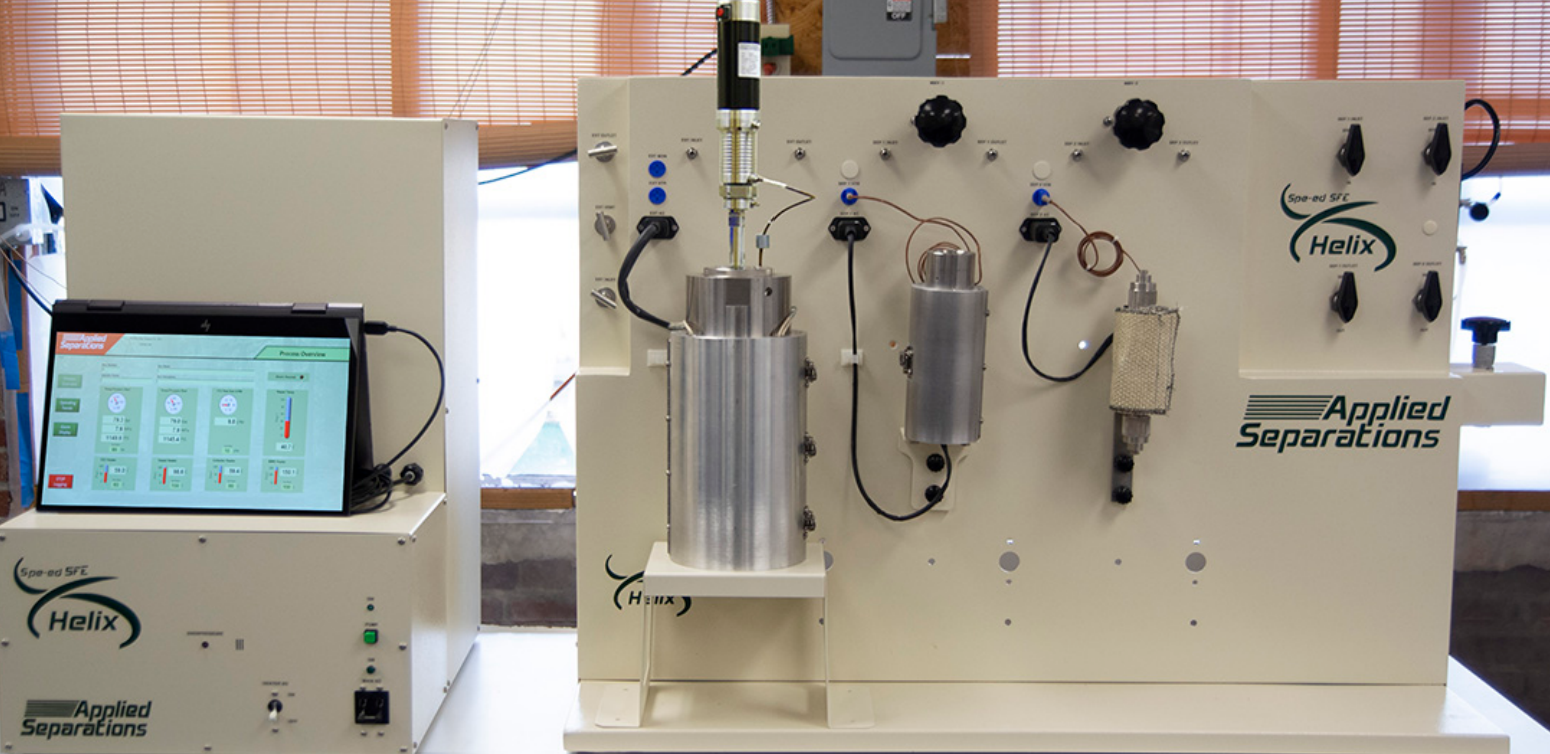
|
Supercritical Fluid Extractor: The SPE-ED SFE Helix is a supercritical fluid extractor renowned for its advanced technology and versatility in various industries. Its design incorporates a helical coil system to enhance extraction efficiency by maximizing surface area contact between the supercritical fluid, typically carbon dioxide, and the sample. With precise control over pressure and temperature parameters, it ensures selective extraction of target compounds while maintaining safety through integrated features like pressure relief valves and temperature monitoring systems. Known for its sustainability and regulatory compliance, it delivers high-quality extracts across applications including pharmaceuticals, food, and nutraceuticals, making it a preferred choice for those seeking efficient and environmentally friendly extraction solutions. The Helix CO2 Extraction System, equipped with a CO2 separator, enables the extraction of samples up to one liter in volume, operating at pressures of up to 10,000 psi and temperatures of up to 240°C, with the option to discharge the extract into either a separator or an ambient environment. Its temperature capabilities extend up to 240°C without encountering technical limitations due to insufficient heat. Operating at pressures of up to 10,000 psi ensures maximum density and solvating power, preventing extract retention within the pressure vessel. Standard vessel sizes ranging from 24mL to 1L facilitate scalability. Make: SPE-ED SFE Helix series. |
| 05 |
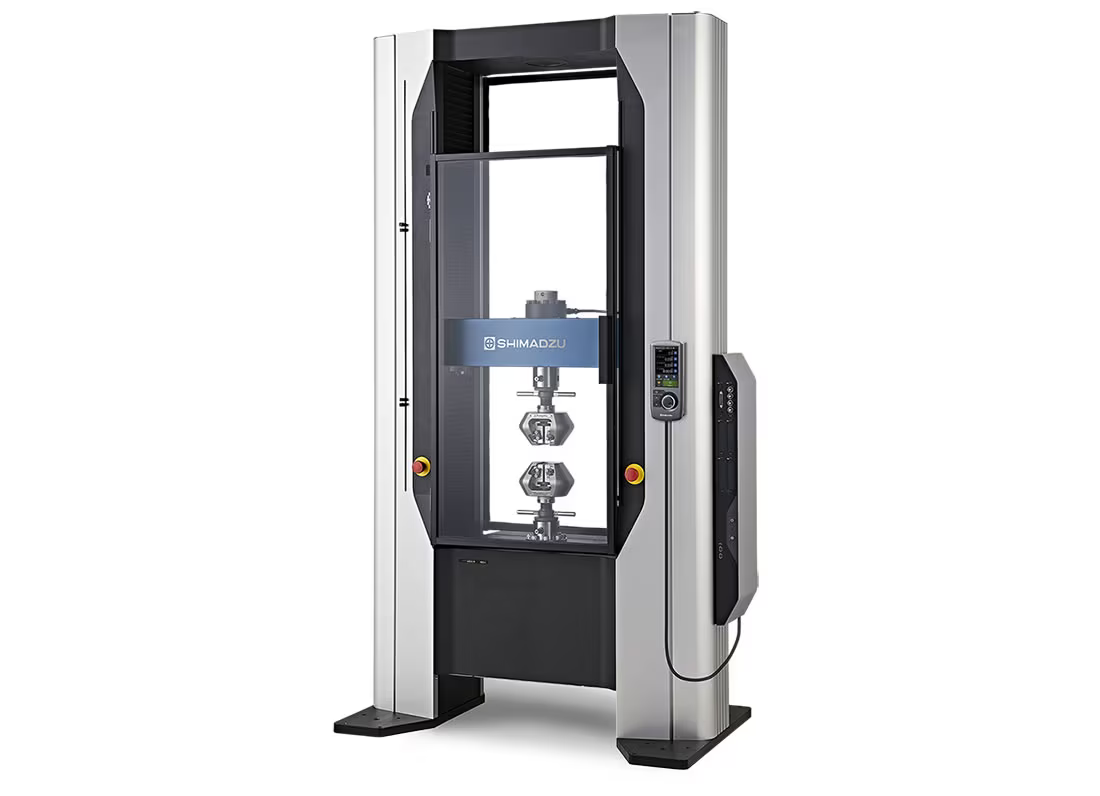
|
Universal Testing machine: The UTM machine is an essential tool for determining the mechanical properties of materials. Its working procedure involves subjecting a specimen to a controlled load and measuring its response, which provides valuable information for material design and quality control. Shimadzu UTM features a high rigidity frame; high-speed sampling and high-accuracy automatic control; an intelligent crosshead; stroke limit switches; a high degree of safety; smart controller equipped with a progressive user interface; and software that supports the creation of test conditions and data processing with intuitive operability. Universal testing machine is used to test the tensile stress and compressive strength of materials as well as flexure tests, peel tests, tear tests and other mechanical tests. Make: Shimadzu AGX-50kNVD. |
| 06 |
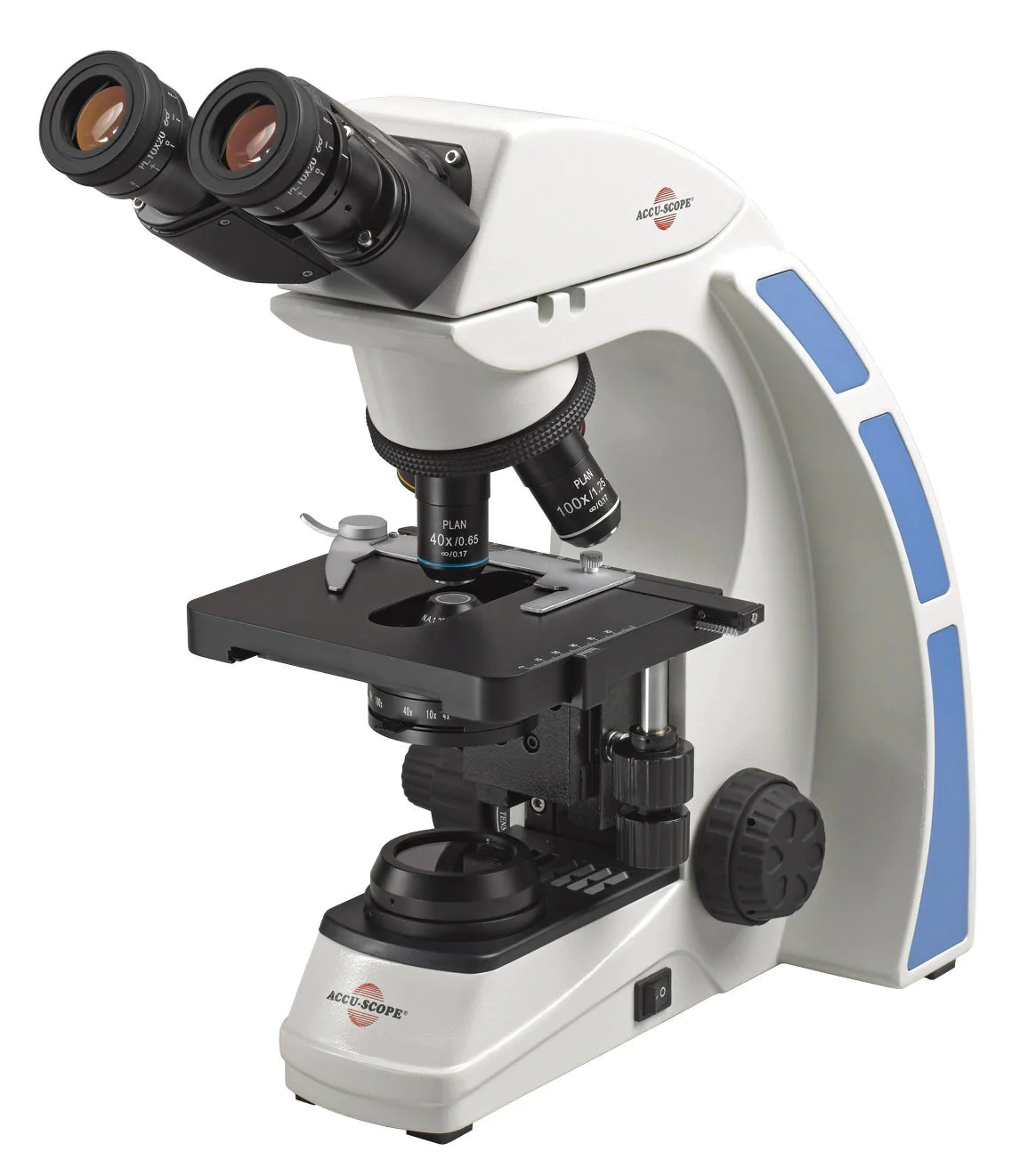
|
Trinocular Microscope: Trinocular microscopes are binocular microscopes that are equipped with an additional port for a camera for the photographic recording during visual observations along with two eyepieces. A camera port or adapter is required to attach the camera. Make: Accu-Scope 3000-LED Series. Head: Binocular or Trinocular, 30⁰ inclined and rotatable 360⁰ Eyepieces: HWF Plan 10x eyepiece, 20mm field of view with built-in diopter adjustment; a pointer is standard in one eyepiece Nosepiece: Reversed, quadruple Objectives: Infinity Plan Achromat 4x, 10x, 40xR*, or 100xR oil* (*spring-loaded) Condenser: N.A. 1.25 Abbe condenser with options for phase and darkfield sliders Stage: Mechanical stage, 140 x 132mm with X-Y movement range of 76 x 50mm Illumination: 3-watt LED with variable intensity control, Universal power supply 110-220v Focusing: Coaxial focusing system with an adjustable tension control and upper limit stop to prevent accidental damage to slides; all metal gears, brass fine focus gear |
| 07 |
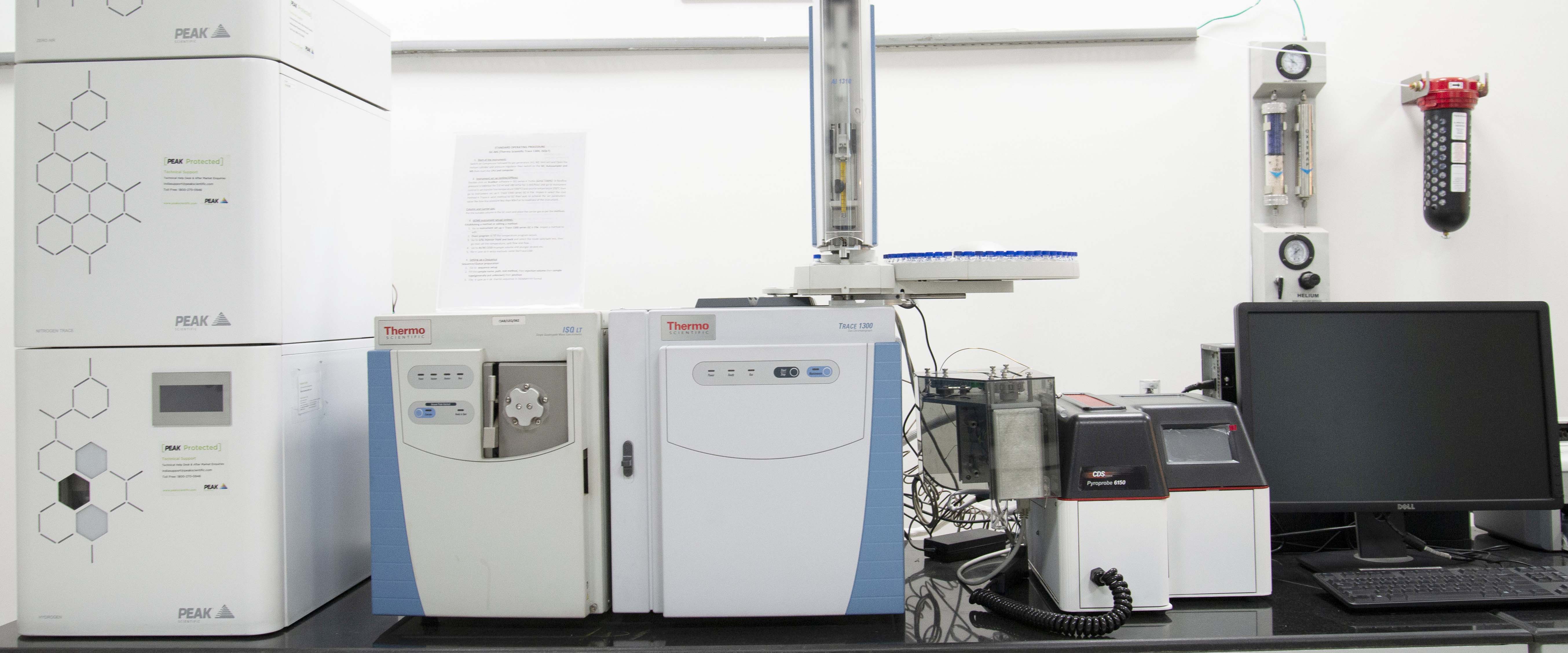
|
Gas Chromatography-Mass Spectrometry (GC-MS) is one of the universal analytical technique generally used to identify and quantify the unknown organic compounds in a mixture. The Trace 1300 GC is equipped with FID, and ISQ LT single quadrupole mass spectrometer (GC-MS) from Thermo Scientific Inc. can be used for analysing a wide range of samples containing organic molecules (mass range: 1.2–1100 u with a unit mass resolution on electron ionization mode) from the flavour and fragrances industry, environmental science, forensics, medical, etc. Suitable solvent-soluble Solid and liquid form of samples can be analyzed in this technique. GC-MS coupled with pyrolysis (Pyrolysis-GC-MS) (CDS Pyroprobe 6150 with Drop-in-Sample-Chamber (DISC)) is a quite useful technique for directly analysing the solid samples, particularly of polymeric nature without any pretreatment. The complex samples, including insoluble materials, such as cellulose, rice straw, wheat straw, dyes, paints and rubber, can be used in this technique at a temperature range of ambient to 1300 °C. Available column: HP-5MS (0.25mmx30m) |
| 08 |
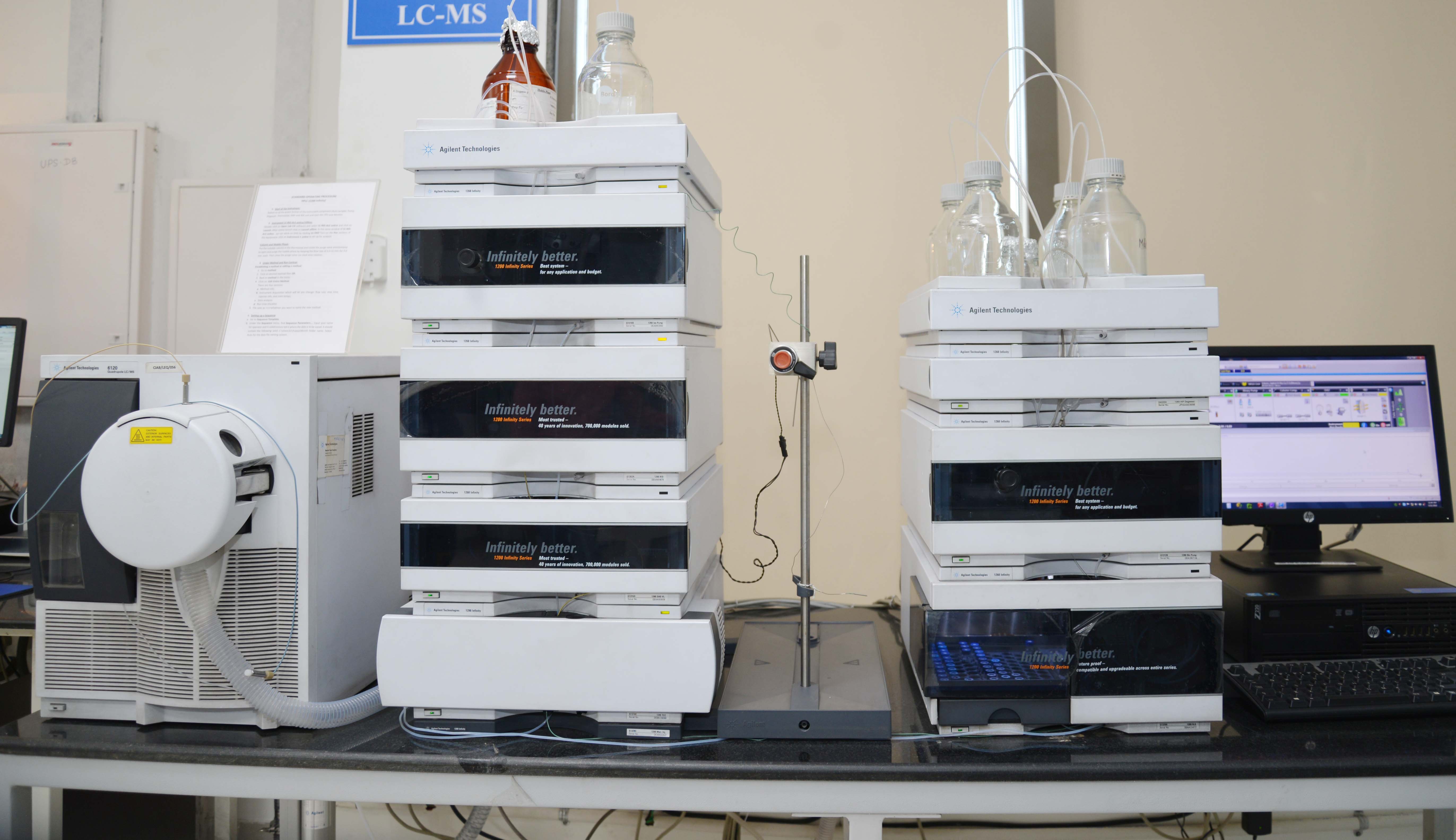
|
High-Performance Liquid Chromatography (HPLC-MS) is an analytical technique used to separate, identify, and quantify components present in a liquid form of samples under high-pressure conditions. Atmospheric pressure ionization mass spectrometry (API-MS) is a powerful analytical technique used to determine the molecular mass and identify the structure of chemical compounds. MS is typically used to measure mass-to-charge ratios of ions which are generated in the form of the mass spectrum. LC coupled MS is equipped with photodiode-array UV-Vis detector (PDA) and Refractive Index detector (RID) (Make: Agilent 1200 series). This sophisticated online technique is generally used to identify the unknown constituents in the given samples. The Agilent 1260 Infinity system hyphenated with 6120 single quadrupole MS detector allows analyzing the polar, non-volatile compounds with a mass range of 100 to 2000 m/z. Suitable solvent-soluble solid and liquid form of the sample can be analyzed using this technique. The coupled LC-MS can be used to acquire a full spectrum of the sample (e.g., sugar monomers and oligomers, pharmaceutical compounds and natural product), which is quite challenging on GC-MS. Autosampler capacity: 100 positions of 1.5/2.0 ml size Available columns: Eclipse C18(4.6x100)mm Detectors: RI, UV/PDA |
| 09 |
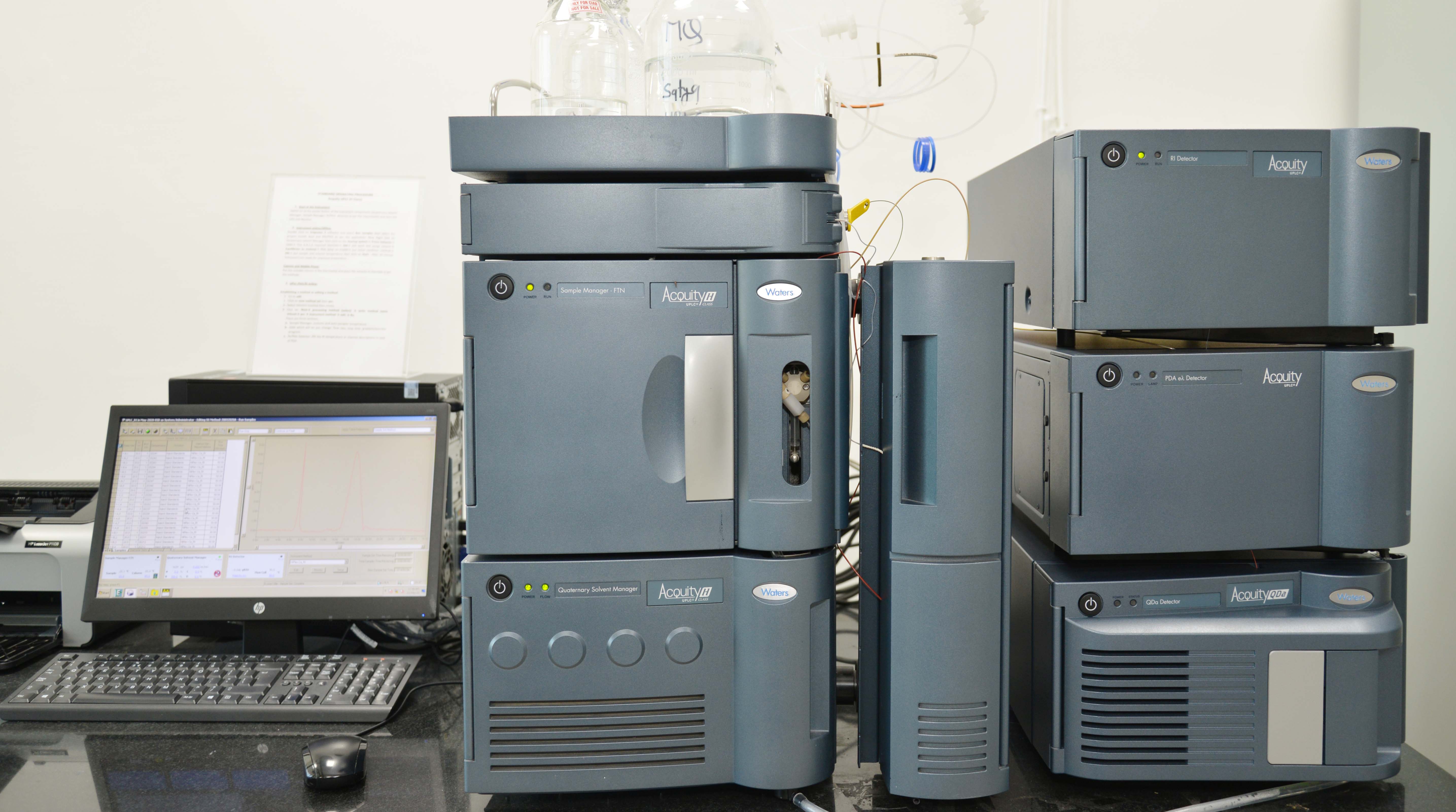
|
Ultra-Performance Liquid Chromatography (UPLC-MS) is a separation technique that has significant advances in instrumentation and column technology to achieve a remarkable increase in the resolution, speed and sensitivity in liquid chromatography. UPLC-H class System with hyphenated QDa MS detector (automated mass calibration and resolution verification) allows analyzing polar, non-volatile compounds with a mass range of 30-1250 m/z. Suitable solvent-soluble solid and liquid form of the sample can be analyzed in this technique. This UPLC-MS can be used for a wide range of samples (e.g. sugar compounds, pharmaceutical compounds and natural product), which are quite challenging to be analysed in GC-MS. Autosampler capacity: 100 positions of 1.5/2.0 ml size Available columns: Eclipse C18(4.6x100)mm Detectors: PDA/RID/QDA |
| 10 |
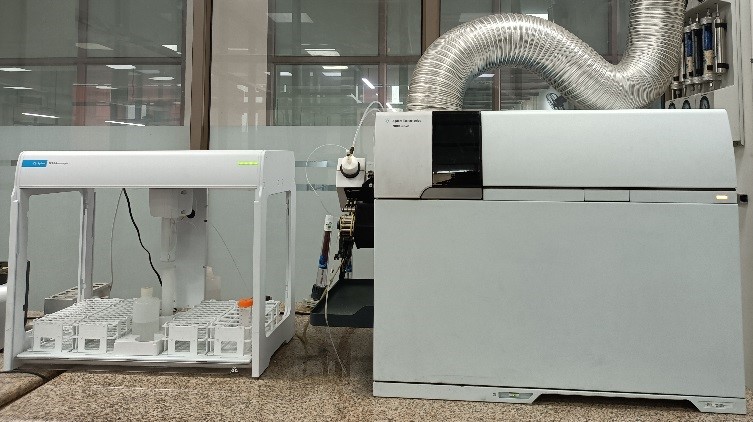
|
ICP-MS is a technique used to measure elements(metals and non-metals) in ionic form at trace levels in samples. Ions are then sorted and quantified based on their mass-to-charge (m/z) ratio in the mass analyser. Agilent 7800 application is extended to ionome profiling of biological fluids. It is used in a variety of industries including, but not limited to, environmental monitoring, geochemical analysis, metallurgy, pharmaceutical analysis, biology and clinical research. Autosampler capacity: 240 positions |
| 11 |
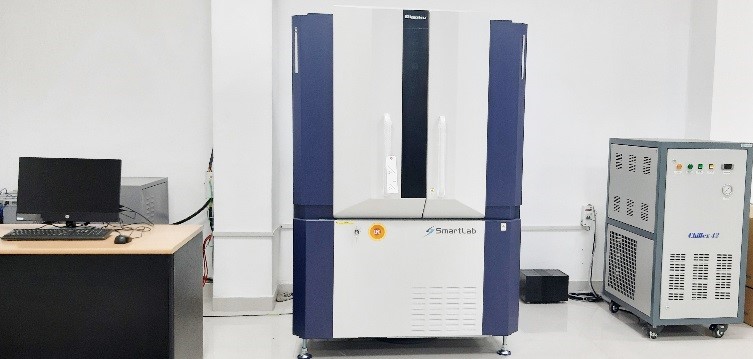
|
X-ray diffraction is a technique used to identify the crystalline nature and the diffraction pattern (phase identification) of powdered material and thin films. SmartLab SE XRD technique of Rigaku can also be used to calculate the particle size of solid material and has a wide range of applications in geology, material science, environmental science, engineering, and biology. Sample Nature: Powder or Thin film |
| 12 |
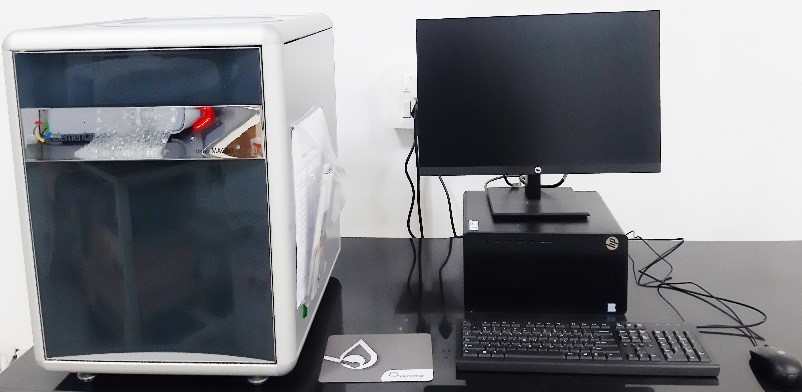
|
The CHNOS Analyser is used in determining the percentages of Carbon, Hydrogen, Nitrogen, Oxygen and Sulphur of organic compounds, based on the principle of "Dumas method" which involves the complete and instantaneous oxidation of the sample by "flash combustion". The Vario MACRO cube CHNSO analyzer of Elementar Analysensysteme GmbH can be used for analysing a wide range of samples containing C,H,N,O,S from organic compounds, pharmaceuticals, Geological & Environmental samples, metals and alloys, Food & Agricultural Industries etc. Sample must be pure and all contaminants must be removed. Sample weight should be in between 4-5 mg Detector: TCD Autosampler capacity: 60 positions |
| 13 |
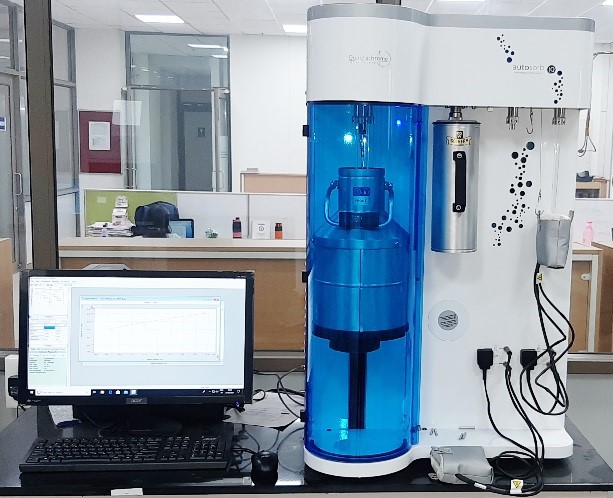
|
Physisorption is the adherence of molecules from a solid or gas adhering to the surface of a solid sample. The AsiQ-XR-XR-AG phsisorption analyser of Anton Paar can be used to determine surface area and porosity that include pore volume (micro-and mesopore) and pore size distribution of a solid sample of Pharmaceutical Nanotechnology, Metallurgy, Materials Science, and more. |